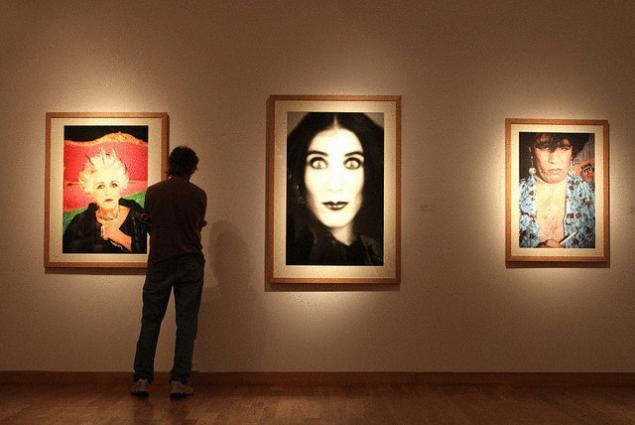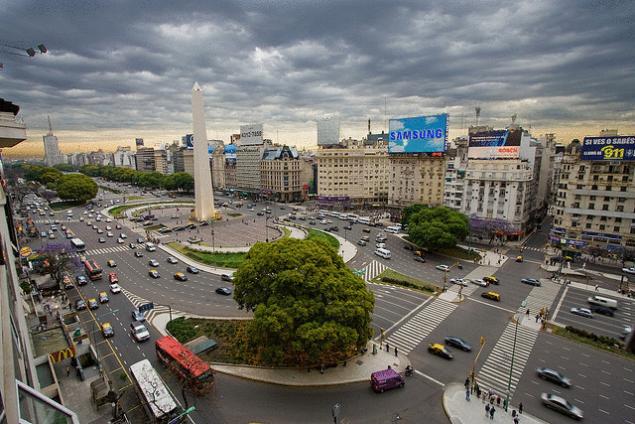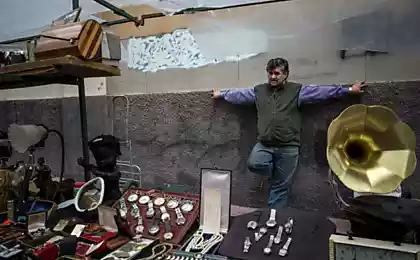239
Attractions of Buenos Aires
Buenos Aires is one of the most visited cities in South America, and for good reason. For over 400 years, the city has been known for its outstanding cultural life and European style architecture. One of the most sensual dances in Argentina is the tango, and Buenos Aires is the perfect place to learn to master it. In this tape you will see the most interesting sights of Buenos Aires.
Modern buildings cover the coastline of La Plata in Puerto Madero, the largest urban development project in the capital. Puerto Madero was the main port of Buenos Aires during the late 19th century, but became obsolete due to the inability to receive large ships. The port fell into disrepair until 1989, when it was decided to turn aging warehouses into something more meaningful: buildings that could be used as residences, restaurants, shops and company offices. To give the project a little grace, all the streets in the area were named after prominent women. Walking around Puerto Madero is a great way to have a pleasant day.

The National Museum of Fine Arts (Museo Nacional de Bellas Artes), located in the Recoleta area, is very popular with visitors. Many compare it to the Mini Louvre because of its outstanding collection of works by European and Argentine artists. There are not many places in the world where people can see fine art for free. The museum opened in 1895 and moved to its current location, a renovated pumping station, in 1933. Its fine art collection, the largest in Argentina, ranges from medieval art to the 20th century.

Opened in 1908 by Verdi’s Aida, the Colon Theatre in Buenos Aires was designed by a group of architects professing an eclectic style of the structure. With 2,500 seats and standing seats for 1,000 people, Colón was the largest opera house in the world until the completion of the Sydney Opera House in 1973. It remains one of the main attractions in Buenos Aires.

Carlos Tays Botanical Garden of Buenos Aires is a French landscape painter who came to Buenos Aires when he was 40 years old and greatly influenced the appearance of the city in the late 19th and early 20th centuries. Under his supervision, many parks were created and existing ones renovated. But the botanical garden was his favorite project. Located in the Palermo area, near the zoo, the botanical garden is home to more than 5,000 plant species, many of which occupy entire sections and are exhibited. Numerous visitors say that the park is a great way to escape the hustle and bustle of the Argentine capital, stroll along winding trails, or just read while sitting on a bench.

The obelisk in Buenos Aires El Obelisco is a popular sight in Buenos Aires with a height of 68 meters. The obelisk was built in 1936 to commemorate the 400th anniversary of the founding of the city as the capital and as the birthplace of the Argentine flag. The flag appeared in 1812 in the church of St. Nicholas de Bari, on the site of which the obelisk was built. The obelisk stands proudly at the intersection of Avenue 9 July and Corrintes Avenue. As the widest street in the world, Avenue 9 July is named after the corresponding date of 1816, when Argentina declared its independence from Spain.

Travelers who enjoy a delicious lunch can visit Cafe Tortoni, Argentina’s oldest and most famous cafe. Tortoni was founded by a Frenchman in 1858, who modeled it after the Paris Café. It is a popular place to enjoy coffee or snacks with friends, as well as a friendly meeting with writers, painters and other artists. It is also the perfect place to see professional dancers dancing the tango. Located on the Avenida de Mayo, the Tortoni Cafe entices with its sandwiches, steaks and desserts that look too appetizing.

Travelers who find themselves in Buenos Aires on Sunday are required to visit the market in Dorregó Square, especially rows of antiques and souvenirs. Dorrego, one of the oldest urban squares in Buenos Aires, became a market in the 18th century when farmers brought wagons of produce to sell to locals on Sundays. The existing market of antiques appeared in the early 1970s. Visitors who could not see the Sunday market can enjoy the surrounding area of the square, as well as San Telmo - the old district of the capital. Tired shoppers can relax in a street cafe and watch tango dancers perform, or even take a few lessons from them.

Kaminito, which translates as “little street”, was not always a street. Initially, it was a stream, but when the water dried up, railway tracks were laid in the channel. When the paths were removed, the bed became a garbage dump. Today, Kaminito is considered one of the most colorful streets of Buenos Aires. Located in the La Boca neighborhood, the street is a good place to watch artists in work and view their completed creations. This place is also known for the inspiration of Juan de Dios Filiberto, who wrote his famous tango "Caminito". Several museums are also located along the street.

Recoleta Cemetery is not just an ordinary cemetery. This is where the elite of Buenos Aires and Argentina are buried, including former presidents of the country, Eva Peron and even one of Napoleon's granddaughters. Founded in 1822, this cemetery contains more than 4,500 land graves, of which 94 have been declared National Historic Monuments. The cemetery is a good place to see fantastic marble mausoleums and amazing sculptures sculpted by famous artists. The BBC called it one of the best cemeteries in the world, while CNN also mentioned it among the world's 10 famous cemeteries.

Since the 1810 revolution that led to independence, Plaza de Mayo has been the center of political life in Argentina. Several of Argentina’s main attractions are located around the Square, including the Cabildo, a colonial-era municipal council. Located in the center of the Plaza de Mayo, the Pyramid is the oldest national monument in Buenos Aires. The square was where Mothers gathered with posters and photos of their children, who were tortured and abducted by the military junta in the 1970s.

Source: lifeglobe.net/
Modern buildings cover the coastline of La Plata in Puerto Madero, the largest urban development project in the capital. Puerto Madero was the main port of Buenos Aires during the late 19th century, but became obsolete due to the inability to receive large ships. The port fell into disrepair until 1989, when it was decided to turn aging warehouses into something more meaningful: buildings that could be used as residences, restaurants, shops and company offices. To give the project a little grace, all the streets in the area were named after prominent women. Walking around Puerto Madero is a great way to have a pleasant day.

The National Museum of Fine Arts (Museo Nacional de Bellas Artes), located in the Recoleta area, is very popular with visitors. Many compare it to the Mini Louvre because of its outstanding collection of works by European and Argentine artists. There are not many places in the world where people can see fine art for free. The museum opened in 1895 and moved to its current location, a renovated pumping station, in 1933. Its fine art collection, the largest in Argentina, ranges from medieval art to the 20th century.

Opened in 1908 by Verdi’s Aida, the Colon Theatre in Buenos Aires was designed by a group of architects professing an eclectic style of the structure. With 2,500 seats and standing seats for 1,000 people, Colón was the largest opera house in the world until the completion of the Sydney Opera House in 1973. It remains one of the main attractions in Buenos Aires.

Carlos Tays Botanical Garden of Buenos Aires is a French landscape painter who came to Buenos Aires when he was 40 years old and greatly influenced the appearance of the city in the late 19th and early 20th centuries. Under his supervision, many parks were created and existing ones renovated. But the botanical garden was his favorite project. Located in the Palermo area, near the zoo, the botanical garden is home to more than 5,000 plant species, many of which occupy entire sections and are exhibited. Numerous visitors say that the park is a great way to escape the hustle and bustle of the Argentine capital, stroll along winding trails, or just read while sitting on a bench.

The obelisk in Buenos Aires El Obelisco is a popular sight in Buenos Aires with a height of 68 meters. The obelisk was built in 1936 to commemorate the 400th anniversary of the founding of the city as the capital and as the birthplace of the Argentine flag. The flag appeared in 1812 in the church of St. Nicholas de Bari, on the site of which the obelisk was built. The obelisk stands proudly at the intersection of Avenue 9 July and Corrintes Avenue. As the widest street in the world, Avenue 9 July is named after the corresponding date of 1816, when Argentina declared its independence from Spain.

Travelers who enjoy a delicious lunch can visit Cafe Tortoni, Argentina’s oldest and most famous cafe. Tortoni was founded by a Frenchman in 1858, who modeled it after the Paris Café. It is a popular place to enjoy coffee or snacks with friends, as well as a friendly meeting with writers, painters and other artists. It is also the perfect place to see professional dancers dancing the tango. Located on the Avenida de Mayo, the Tortoni Cafe entices with its sandwiches, steaks and desserts that look too appetizing.

Travelers who find themselves in Buenos Aires on Sunday are required to visit the market in Dorregó Square, especially rows of antiques and souvenirs. Dorrego, one of the oldest urban squares in Buenos Aires, became a market in the 18th century when farmers brought wagons of produce to sell to locals on Sundays. The existing market of antiques appeared in the early 1970s. Visitors who could not see the Sunday market can enjoy the surrounding area of the square, as well as San Telmo - the old district of the capital. Tired shoppers can relax in a street cafe and watch tango dancers perform, or even take a few lessons from them.

Kaminito, which translates as “little street”, was not always a street. Initially, it was a stream, but when the water dried up, railway tracks were laid in the channel. When the paths were removed, the bed became a garbage dump. Today, Kaminito is considered one of the most colorful streets of Buenos Aires. Located in the La Boca neighborhood, the street is a good place to watch artists in work and view their completed creations. This place is also known for the inspiration of Juan de Dios Filiberto, who wrote his famous tango "Caminito". Several museums are also located along the street.

Recoleta Cemetery is not just an ordinary cemetery. This is where the elite of Buenos Aires and Argentina are buried, including former presidents of the country, Eva Peron and even one of Napoleon's granddaughters. Founded in 1822, this cemetery contains more than 4,500 land graves, of which 94 have been declared National Historic Monuments. The cemetery is a good place to see fantastic marble mausoleums and amazing sculptures sculpted by famous artists. The BBC called it one of the best cemeteries in the world, while CNN also mentioned it among the world's 10 famous cemeteries.

Since the 1810 revolution that led to independence, Plaza de Mayo has been the center of political life in Argentina. Several of Argentina’s main attractions are located around the Square, including the Cabildo, a colonial-era municipal council. Located in the center of the Plaza de Mayo, the Pyramid is the oldest national monument in Buenos Aires. The square was where Mothers gathered with posters and photos of their children, who were tortured and abducted by the military junta in the 1970s.

Source: lifeglobe.net/























